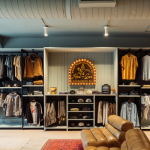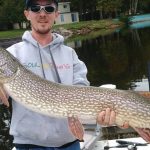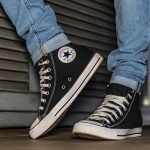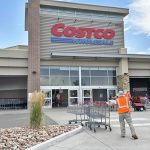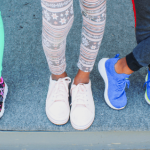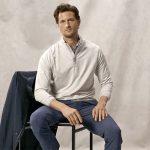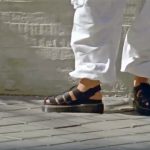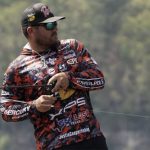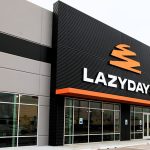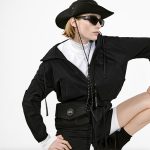While Under Armour has the potential to become a big player in the running footwear category, the compression apparel king faces almost marathon-like challenges around its spring 2009 entry.
The biggest hurdle will be breaking into a category thats already well-entrenched with strong competitors and one where customers are extremely brand-loyal. The launch also comes amid a number of other running shoe introductions from Merrell, Ecko, K-Swiss, Karhu and others. Finally, open-to-buys have tightened in a sluggish economy and buyers are more likely to rely on proven sellers rather than betting on the next big thing.
But Under Armours running launch is clearly getting the support of full-line sporting goods chains, and is expected to be a key driver at big box this coming spring. Allocation is expected to be kept tight to keep demand above supply, and retailers are already clamoring for a greater allocation.
Although its reception in run specialty is spottier, Under Armour also has a number of fans in that channel as well.
“Theyll have as much impact as anyone weve seen in a long time coming into the market, because they have such momentum and have built such brand recognition,” said Jeff Phillips, president of Fleet Feet, Inc. “Since when have we been able to say that about anyone in run specialty?”
For many, the hope is that, just on name recognition, Under Armour will provide another spark to whats been a steadily growing category at retail for years. Many also feel the brand will attract a younger customer to running; one that has already gravitated toward Under Armour apparel.
“There is an age group for which names like Brooks, Saucony and New Balance dont necessarily have a lot of meaning,” notes Jim Duffy, an analyst at Thomas Weisel Partners.
Having a footwear component is also expected to help Under Armour expand its apparel in run specialty.
Matt Powell, senior analyst at SportsOneSource Group, says Under Armour needs another growth vehicle as its apparel business starts to plateau. On the bright side, he expects ardent Under Armour fans to make the running launch successful, as were the companys launches into cleats and training shoes.
Powell also says that, compared to other running brands, Under Armour has a bigger opportunity in fashion running footwear a larger market than performance running. However, Powell also points out that Under Armour primarily grabbed market share in its cleats and training footwear launches. He believes the company needs to show that it can tap incremental growth in footwear similar to what was done in apparel.
“They desperately need running to work, and not just in year one but as a growth vehicle,” observes Powell. “So far, in footwear, they have launched well but have not grown sales in subsequent years. Also, the running space is much more crowded; so, instead of one or two competitors, they will have a dozen. So making a big splash will be challenging.”
The category is dominated by seven brands: Asics, Adidas, Brooks, Mizuno, New Balance, Nike and Saucony; as well as a number of smaller niche players. Runners also can be fiercely loyal.
“Runners are pretty picky,” says Ron Menconi, VP and director of marketing and merchandising at Joes Sports & Outdoor. “Theyre pretty brand-loyal and model-loyal in a lot of cases. So getting them to try something new is difficult.”
Word-of-mouth is also critical in the running community, as well as racking up accolades in Runners World magazine. Ultimately, Under Armours success will depend on whether the shoes work for runners.
“They could be beautiful shoes and be the right price, but this is a true test of how they perform,” says Menconi. “Does it fit right? Are they providing the cushioning and support those customers are looking for? Are they getting the mileage out of them? If they perform, theyll have a chance.”
But Menconi says Under Armour “has done a good job with the shoes” and hes among the many merchants hoping for a break-out. Many are particularly enthused that Chris Brewer, widely credited for launching Mizuno USA into the running category, is leading design. The overall footwear effort is being overseen by former Adidas exec, Raphael Peck, SVP, footwear.
“Its an all-store buy for us,” says Sean Scales, chief operating officer at City Sports. “Theyve brought on some good brains to get it done and we have every reason to believe it should do equally well as their moves into cleats and training. Weve been an Under Armour account for a long time so weve got a well-established customer base there. Theres a lot of equity behind the brand.”
Jeff Rosenthal, VP of merchandising at Hibbett Sports, also feels that, since the brand skews “a little younger” than typical running brands, it could add some incremental sales to the category. But he also says that name recognition alone should encourage customers to at least try the shoes.
“As long as they make quality technical shoes that work, they should do fine,” says Rosenthal. “That will be their biggest issue.”
FEEDBACK TAPPED FROM RUN SPECIALTY
Moreover, Under Armour sought out feedback from several key running shops throughout the more-than-two-year development process, in addition to extensive internal tests. Four stores served as testing centers: Falls Road Running (Baltimore Running), Fleet Feet Chicago, RunTex and Seattle Running Company.
For example, the racing team and staff members at Fleet Feet Chicago wore the shoes through three iterations, which included filling out detailed forms and meeting with the product team for an open forum. Changes were made based on the feedback.
Catherine Moloznik, buying manager at Fleet Feet Chicago, believes the footwear line has potential if only because Under Armour was one of the only apparel brands to grow at its two stores this past spring. The brand will also allow the store to reach a greater number of beginner and younger athletes.
“Under Armour is a marketing machine and has been able to attract a diverse group of people,” says Moloznik.
She said the key challenge will be gaining acceptance by “hardcore” runners.
“We can only do so much to educate our consumers on the technical merits of each style, but it will be up to the consumer as to whether or not they will be ready to give the brand a fair shot,” says Moloznik. “Also, each of our current eight footwear brands are producing very competitive shoes. Under Armour will have an uphill battle against the best in our industry. But at Fleet Feet Sports Chicago, we are giving them the opportunity to battle it out.”
Falls Road Running also coordinated with many focus groups and wear tests over the last year-and-a-half, and owner Jim Adams believes the technology rivals Asics and Brooks right out of the gate.
“Many of the wear testers are now die-hard devotees,” said Adams. “Some of them went back to their other shoes, which was to be expected. But I think the fact that they developed some loyal followers out of a pretty hardcore group of wear testers speaks for the quality of the product.”
Adams likewise believes Under Armour can bring in new customers to his store.
“Many of the high school runners will want the shoe for the local name recognition and brand affiliation, while many of the older weekend-warrior athletes will want the shoe because they identify with the Under Armour reach, not to mention the older athlete who stays in shape to play company softball, flag football and so forth in their adult lives,” said Adams.
The challenge for Under Armour, according to Adams, will be convincing running stores well beyond its Baltimore headquarters “that they are going to be a major player in the specialty running markets, and that their brand recognition is going to attract new customers into specialty stores.” With the brand also selling widely at big boxes, specialty stores have to be reassured that customers will seek out the more-knowledgeable sales associates found at running stores and buy the brand, he said.
Like many other stores, Lukes Locker is ordering the footwear largely because Under Armour apparel has been successful at the chain. But Matt Lucas, president, believes Under Armour has been so successful with its launches because it undergoes a “diligent testing process” beforehand. Thats continued with running.
“They listened to us and a lot of other running retailers, and made changes along the way, so I feel they going to be bringing something to market thats pretty good,” said Lucas.
SOME RUNNING STORES WAITING FOR DEMAND
Several running shops choosing not to carry the running collection dont carry Under Armour apparel, and many appear to be waiting for demand to become more evident in the marketplace. Jeff Campbell, a buyer for Big Peach Running in Georgia, said he “hasnt really had a lot of people coming in asking for it.”
Jim Stuart, footwear buyer at Dick Pond Athletics in Illinois, says his chain is sticking with “tried and true” brands in a down economy. He adds, “There are tons of footwear companies out there already doing a good job.”
John Rogers, owner of Maine Running, believes “it is extremely hard for a brand without a running heritage to break into the market,” and feels Under Armour is a “sporting goods driven” brand.
But many full-line sporting goods merchants more familiar with the brand believe that, as long as the product holds up technically, it will eventually find a home in running footwear.
“Like anybody trying to get into running, the challenge is that theres lot of quality brands out there and lot of people making great product.
Also, at the psychological level, it can be hard if you dont have that running heritage,” says Sean Scales, chief operating officer at City Sports. “But not many companies have the momentum, credibility or buzz that Under Armour does.”

